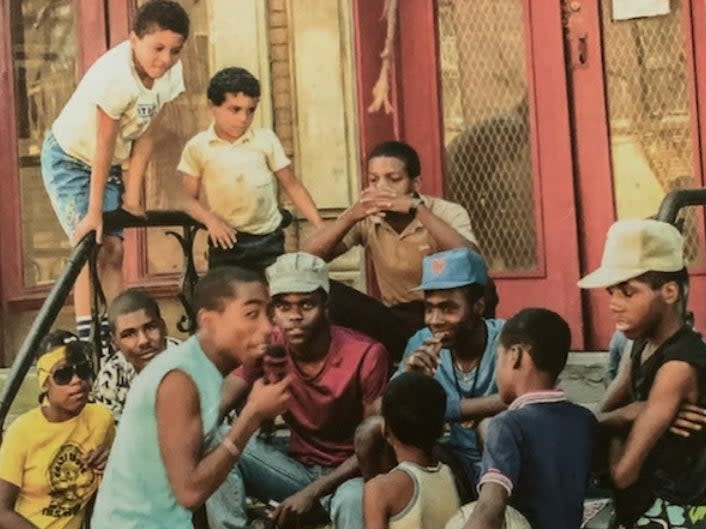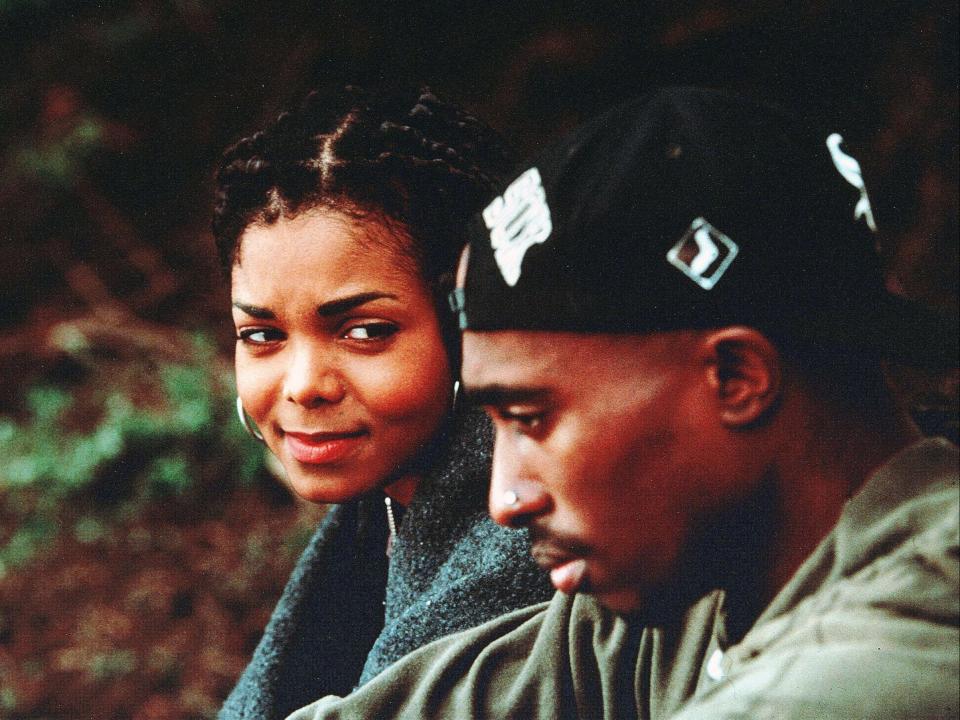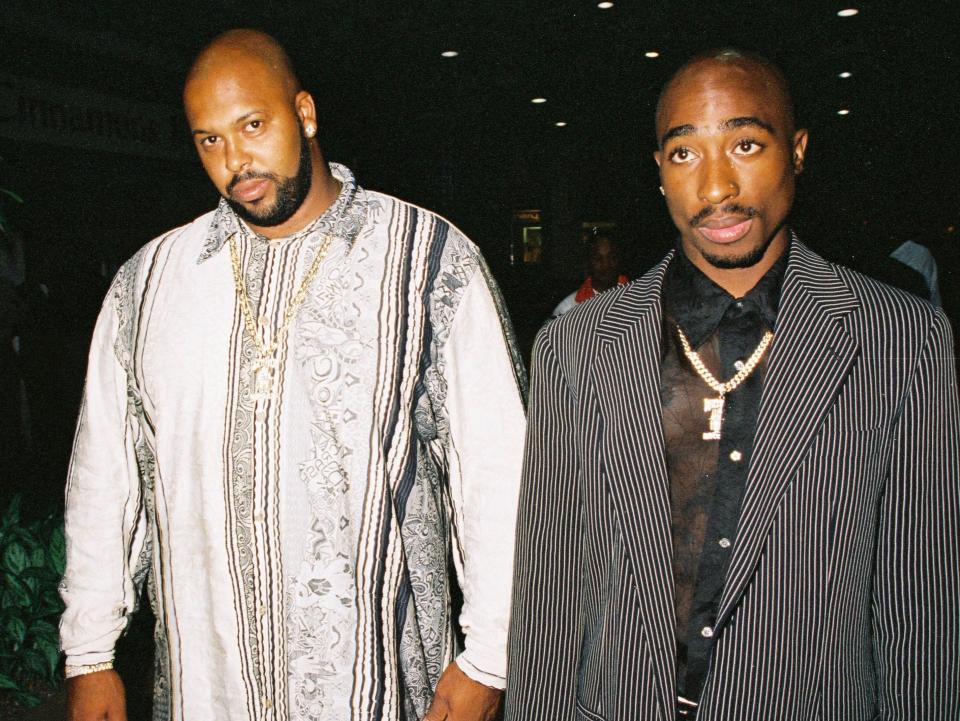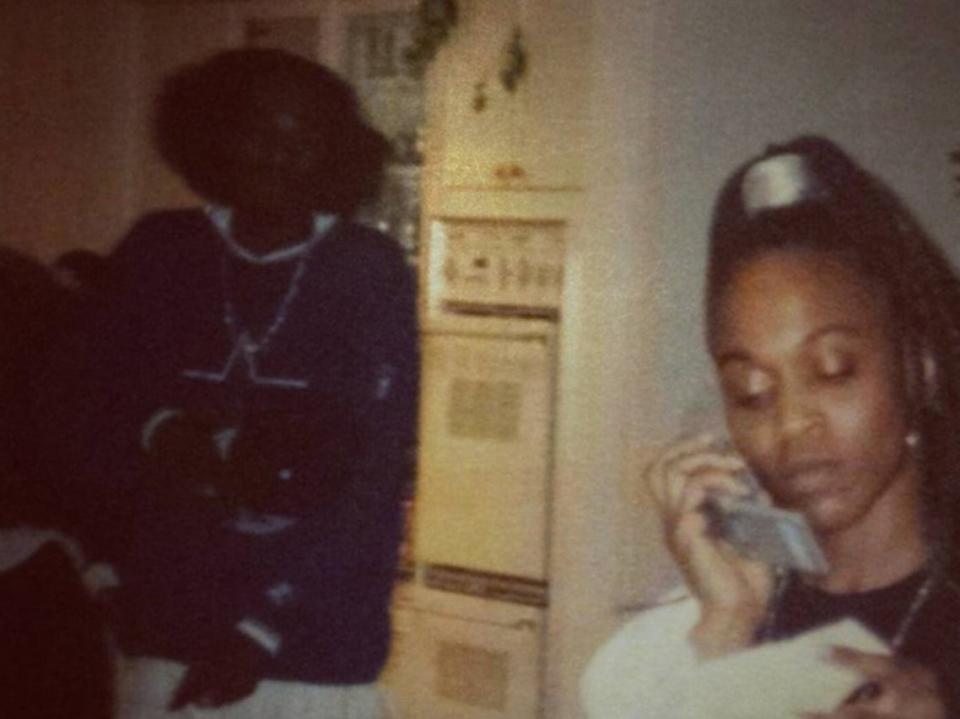2Pac’s All Eyez On Me at 25: ‘It’s the Sgt Pepper’s of hip-hop’:

All his life, Tupac Amaru Shakur knew he was being watched. The rapper, one of the most recognisable names in hip-hop, had grown up in East Harlem surrounded by persons of interest. His mother, Afeni, was eight-months pregnant with him in 1971 when she was acquitted – along with 20 other members of the Black Panther Party – of more than 150 charges stemming from an alleged bomb plot. His stepfather, Mutulu, an activist, was on the FBI’s 10 Most Wanted list. Fast-forward to 1994, the night before Shakur was convicted of sexual assault and sent to prison, he was shot five times in the lobby of a New York recording studio during an alleged attempted robbery. Months later in his cell, he would wake up from his nightmares convinced that he was being fired at again.
“Like most American heroes, Tupac Shakur had glide in his stride, big guns, and leather holsters,” music critic Danyel Smith wrote in Vibe’s biography of the late artist. “But his life was about juggling plums while bullets nipped at his ankles. It was about defiance, women, paranoia, ego, and anger – and going out in a blaze of what he imagined to be glory.”
If Shakur was internationally known before, the release of his fourth album All Eyez On Me on 13 February 1996 sent him stratospheric. It became his second #1 album and sold half a million copies in the first week of its release, signalling the arrival of a new type of rap star – one who was admired by everyone, not just rap fans. A double album spanning 27 tracks, it was compared to the great rock opuses of all time and was the masterstroke of an artist who could set the scene with poetic elegance, colouring in between the lines with compassion and solitary intellect, before blowing it up with rage and fury, angry at an unfair world.
But it was that paranoia – and the belief that everyone was anticipating his next move – which imbued All Eyez On Me with a potent energy, amped up by his natural flair for drama and storytelling, having studied theatre at the Baltimore School of Arts (where he met one of his closest friends, Jada Pinkett Smith). By this point, in the mid-Nineties, Shakur was at the top of his game, selling millions of records and starring in movies. Because of his numerous run-ins with the law, his verbal shootouts with rival rappers and the shadowy people he chose to associate himself with, though, he felt he was viewed as a rogue instead of a respected celebrity.
“If I was white I would have been like John Wayne,” Shakur told Entertainment Weekly in 1994. “Somebody who pulled himself up from their bootstraps. From poverty. From welfare. Now I am kissing Janet Jackson [in the movie Poetic Justice]. I’m doing movies. I feel like a tragic hero in a Shakespeare play.”

That paranoia continued to lurk beneath the surface, while death haunted him everywhere he went. Asked in that same interview where he thought he might be in 10 to 15 years, Shakur responded: “Best case: in a cemetery. Not in a cemetery, sprinkled in ashes, smoked up by my homies.” Realising he’d delivered his answer the wrong way around, he corrected himself. “I mean, that’s the worst case. That’s the worst case. That’s the worst case. Best case: multimillionaire. Owning all of this s***.”
In fact, all of Shakur’s predictions became true far sooner than anyone could have guessed – he was killed in a drive-by shooting just two years later when he was 25 years old. Tragically, All Eyez On Me would be the last album to be released during his lifetime, though it created a sonic boom that would be felt by the music industry for years to come. The fact that it was recorded in just two weeks after he was released from prison astounded everybody. It was evident he had a lot to get off his chest, having just been released from prison and keen to turn public opinion around.
“I always wondered if he had the entire album written while he was in prison,” says California rapper KXNG Crooked, speaking on the phone from LA. “But then you realise it was his passion fuelling the urgency. Once you get in a creative zone like that, nothing can stop you.” Jimmy Jam, one half of the legendary R&B songwriting duo with Terry Lewis (behind hits for Janet Jackson, Mariah Carey, Usher and George Michael), compares the late artist’s output to Prince. “Prince would literally do a song a day and that’s how 2Pac was too,” he says during a Zoom call. “And if it wasn’t a song a day, it was a couple of songs a day.”

As with any star who was taken too soon, Shakur’s legacy is shrouded in myth and mystery, not least because his murder remains unsolved. Take, for example, how he signed to Death Row Records, the label who released All Eyez On Me, after they bailed him out of jail. Among the most infamous rumours surrounding Shakur’s beginnings there was that he signed his contract on a sheet of toilet paper, during a prison visit from label boss Suge Knight at Clinton Correctional Facility in New York. But David S Ash, Shakur’s childhood friend who was there during the meeting, says this wasn’t the case.
“It was definitely on a legal pad,” he says in an interview, recalling the moment Knight and his lawyer interrupted one of the rare visits he was able to have with his friend. “They drafted everything up right there in front of me. 2Pac told Suge the things he needed: a car, a million dollars upfront, and a house for his mother. Then he looked the contract over and told Suge, ‘OK cool, let’s do this.’ And that’s the moment the Death Row deal was done.”

Shakur got to work the second he was a free man, flying straight to LA to begin recording. “I’ve never seen anyone work as fast as him,” says singer Nanci Fletcher, speaking over the phone from New York. She was introduced to Shakur by the producer Dr Dre on the “California Love” music video shoot; her vocals feature across five of All Eyez On Me’s 27 tracks, including “Holla at Me” and “Life Goes On”. “His creativity came like water. He would pull up song after song, and every lyric had meaning,” she recalls. “Everything was fresh – he never repeated anything.”
The 24-year-old’s work ethic was contagious. “He made me feel like I could win,” Fletcher says. “He would come into the booth and be like, ‘C’mon Nanci, get it. Get it.’ I think he made a lot of rappers want to do better.” Despite her contributions to All Eyez On Me, however, Fletcher was never actually credited for her work, due to her friendship with Dr Dre and the growing tensions between him and Knight. “Suge purposely didn’t put my name on the album because I was Dre’s girl,” she alleges. “[Death Row] would credit their friends so they’d get the royalty payments. We had absolutely no control over it. It was a very unprofessional company.”

Among those who did get credit were the all-star cast of producers: Dr Dre, DJ Quik, Johnny J, DJ Pooh, QD3, Rick Rock, Mike Mosely and Daz Dillinger. Dillinger, of rap duo Tha Dogg Pound, produced the bulk of All Eyez On Me’s first disc. “My songs were recorded in the first three days,” says Dillinger in a rare interview, speaking on the phone from his home studio. “The first song we cooked up was ‘Ambitionz Az A Ridah’. That’s why it’s the first song on the album.” The last song the pair laid down was “2 Of Amerikaz Most Wanted”, a mafia-themed “gangsta party” where Shakur collaborates with his then-fellow Death Row artist, Snoop Dogg.
“I was actually gonna sell the beat for that song to [Bay Area rapper] Dru Down,” Dillinger admits. “But something happened with the transaction and it didn’t go through. So I brought the beat back to LA and took it to 2Pac in the studio, and then Snoop walked through the door. That’s when the song came alive.”
Not everything ran smoothly: rapper The Lady of Rage reportedly pulled out of her spot on “Got My Mind Made Up” because she was uncomfortable with the number of male rappers on the track (Method Man, Redman, Dillinger, Kurupt). “She was on there doing some hard s*** but unfortunately she didn’t want to be a part of it,” Dillinger alleges. “2Pac ended up taking the verse off.” Wu-Tang Clan’s Inspectah Deck was another artist who missed out, his verse failing to be included due to some misplaced tapes and a misunderstanding between Dillinger and Dr Dre.
Elsewhere, there were happy coincidences: KXNG Crooked, then 19, says he was initially offered the beat for “How Do U Want It” but turned it down because his older brother had already used the same “Body Heat” sample, originally by Quincy Jones, on one of his own tracks. “I didn’t want it to seem like I was copying him,” he says. But one rapper’s cast-off is another one’s hit: Shakur ended up using the instrumental to underscore a rallying cry for artists affected by censorship, name-checking politicians including Bill Clinton and former US senator Bob Dole.
A common misconception about All Eyez On Me is that 2Pac did away with the socially conscious rap of his two previous albums, 2Pacalypse Now and Me Against The World. “California Love”, a straightforward party anthem, might be his fourth album’s biggest hit, but there are deeper messages peppered throughout. Whether it’s breaking down the harsh realities of street life (“Life Goes On”), tackling the word “b****” and its use in rap music ("Wonda Why They Call U B****”), or examining his own mortality (“Only God Can Judge Me”), All Eyez On Me sees Shakur turn street preacher at numerous points.
As his star was growing, however, so did the alertness around him. R&B singer Jon B, whose track “Are U Still Down?” was one of the final songs Shakur worked on before he died, recalls arriving on set for the “How Do U Want It” video shoot. “The video was being shot in this security compound where you had to go through it like TSA at an airport,” he says. “There were military-style police and everyone had on a laminate. It just showed how important of an asset he was to Death Row at that time.”
That was the first time that Jon B met Shakur, as well as a who’s who of hip-hop. “Everyone was there,” he continues. “[R&B duo] K-Ci & Jojo, [hip-hop artist] Eric B, [hip-hop duo] Sway and King Tech, Johnny J…” The latter producer, Shakur's friend and frequent collaborator who would later work on his posthumously released albums, before his own death in 2008, happened to be behind one of the most divisive tracks on All Eyez On Me. “What’z Ya Phone #”, a sexually charged song featuring Death Row singer Danny Boy, follows Shakur as he navigates a sea of double-time hi-hats and futuristic synth patterns. Swapping his traditional poetic alliteration for off-kilter rhymes, the rapper propositions a woman before engaging in an uninhibited, and frequently voyeuristic, booty call.
“Everybody has something to say about that record [‘What’z Ya Phone #’],” says KXNG Crooked, who regularly has conversations with fans about Shakur on social media. “They just don’t understand it. I’m like, ‘Do you like Prince? Because that record sounds like something he would have made for 2Pac.’” Strengthening the connection, the track actually samples “777-9311”, which the Purple One wrote for The Time’s 1982 album What Time is It?. “We thought it was really cool,” says Jimmy Jam, who left the band with Terry Lewis the following year to pursue their career as songwriters and producers. “We didn't have a lot of interaction with [2Pac] but we were honoured that he chose to use that song,” he says. “2Pac was a genius.”
It transcended regular rap music
KXNG Crooked
All Eyez On Me solidified that genius and took Shakur beyond hip-hop. “It transcended regular rap music,” says KXNG Crooked. “My uncle was a jazz collector; he collected jazz records and just had stacks and stacks of vinyl. All Eyez On Me is the only rap album he ever owned. I rap and he didn’t even own any of my albums.”
“It solidified him as a hitmaker,” Ash agrees of the album’s legacy, also noting Shakur’s charismatic charm. “His ability to bring you into his world was special. He made you feel like even if you had never been around him that he was with you every step of the way when you listened to it.” Rolling Stone called the album a “Cali thug-life version” of Pink Floyd’s The Wall but Jon B thinks it’s more like a Beatles record. “It’s the Sgt Pepper’s of hip-hop,” he says, noting the album’s length, ambition and status in music legend. “It was 2Pac’s golden era. As a people, we crawl, we walk, and then we run. All Eyez On Me is 2Pac running at full capacity.”
All Eyez On Me wound up being the final album that Shakur would release in his short lifetime. Those bullets nipping at his ankles finally caught up with him on a fateful September evening in 1996. He was shot in a drive-by shooting in Las Vegas after watching a Mike Tyson fight and died in hospital six days later, aged 25. It was a bittersweet end for one of music’s most complicated figures; he was on top of the world, a flaming comet speeding towards unparalleled success. But all comets crash eventually, and more than anyone, Shakur seemed to know his death was inevitable – just see his “I Ain’t Mad At Cha” video, in which he dies at the hands of a gunshot wound, filmed just weeks before his death. All Eyez On Me ended up being tragically prophetic, but in more ways than one – even in death, those eyes are still on him till this day.
Read More
‘Utterly radical, subversive and alien’: the untold story of Irish post-punk

